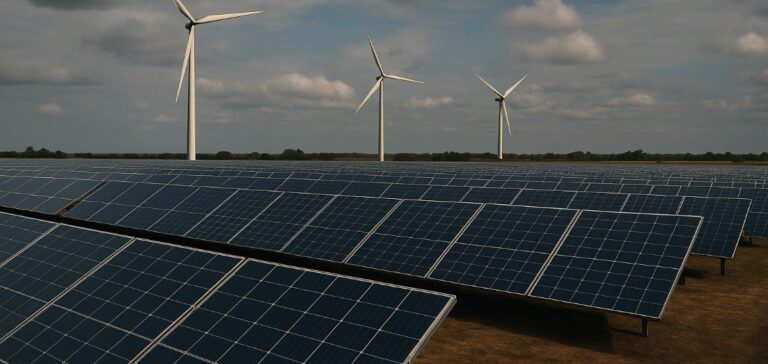In March 2025, the United States recorded its first month in which fossil fuels contributed less than half of the country’s electricity generation, according to data released by Ember, a global energy systems think tank. This shift is attributed to a significant increase in solar and wind output, which together accounted for a record 24.4% of electricity generated.
This level, set at 49.2%, marks a key milestone in the transformation of the US energy landscape. By contrast, generation from so-called “clean” sources surpassed 50% for the first time, reaching 50.8%. The previous low had been set in April 2024, when fossil fuels represented 51%. This development is part of a decade-long trend of declining generation from coal, natural gas, and oil.
Renewables reach historic levels
Solar generation increased by 37% compared to March 2024, adding 8.3 terawatt hours (TWh), while wind grew by 12% (+5.7 TWh). Combined, these two sources generated 83 TWh of electricity, setting a new monthly record and surpassing the previous peak of 75 TWh set in April 2024. Fossil generation declined by 2.5% year-over-year, amounting to a 4.3 TWh drop.
Projections for 2025 indicate that solar will account for more than half of new generation capacity added in the United States. Texas alone is expected to receive over one-third of these installations, confirming its central role in the country’s solar expansion.
A structural shift in the US power system
In March 2015, fossil fuels still accounted for 65% of US electricity production, compared to just 5.7% for wind and solar combined. Ten years later, that share has more than quadrupled, with solar alone reaching 9.2% of total electricity generation. In its US Electricity 2025 report, Ember noted that solar was the fastest growing source of electricity in the US in 2024.
At the same time, coal was overtaken for the first time by the combined output of wind and solar, which accounted for 17% and 15% respectively of the US electricity mix in 2024. This inflection marks a lasting rebalancing in the country’s power production structure, driven by growing investment and a strategic shift in national energy policy.






















